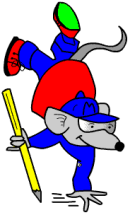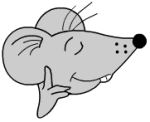Basic sums cause stress for adults!
So reports the BBC today.
Research from Learndirect suggests that over 13 million adults in the UK become stressed when carrying out basic sums. being involved in these stressful situations made the participants’ blood pressure rise by up to 40%. This study shows that people have to use these basic skills about 14 times a day.
One of the most common stress raisers is working out cooking times!
The survey shows that over 27% of adults said they lacked confidence in their basic maths skills.
I think that many of us realise that this is true and that many adults find straightforward maths anything but – yet we keep piling on more pressure on children1
 Use these three free maths worksheets to encourage counting. As well as counting the number coloured you can ask other questions eg How many are not coloured? How many are coloured green? etc. Your child can also draw their own animals and colour them in different ways. Other questions you can ask are: How many legs are there? How many eyes? Can you draw three spots on each fish? etc. Remember to keep to very low numbers, just up to 5 to begin with.
Use these three free maths worksheets to encourage counting. As well as counting the number coloured you can ask other questions eg How many are not coloured? How many are coloured green? etc. Your child can also draw their own animals and colour them in different ways. Other questions you can ask are: How many legs are there? How many eyes? Can you draw three spots on each fish? etc. Remember to keep to very low numbers, just up to 5 to begin with. In order for children to be really confident with handling numbers it is very important that they continue to have a great deal of practice in counting forwards and backwards in ones, tens and hundreds. This might appear quite simple for year 4 children, but they can still be unsure of what happens as they cross the hundreds or thousands boundaries.
In order for children to be really confident with handling numbers it is very important that they continue to have a great deal of practice in counting forwards and backwards in ones, tens and hundreds. This might appear quite simple for year 4 children, but they can still be unsure of what happens as they cross the hundreds or thousands boundaries. How big is a tonne?
How big is a tonne?